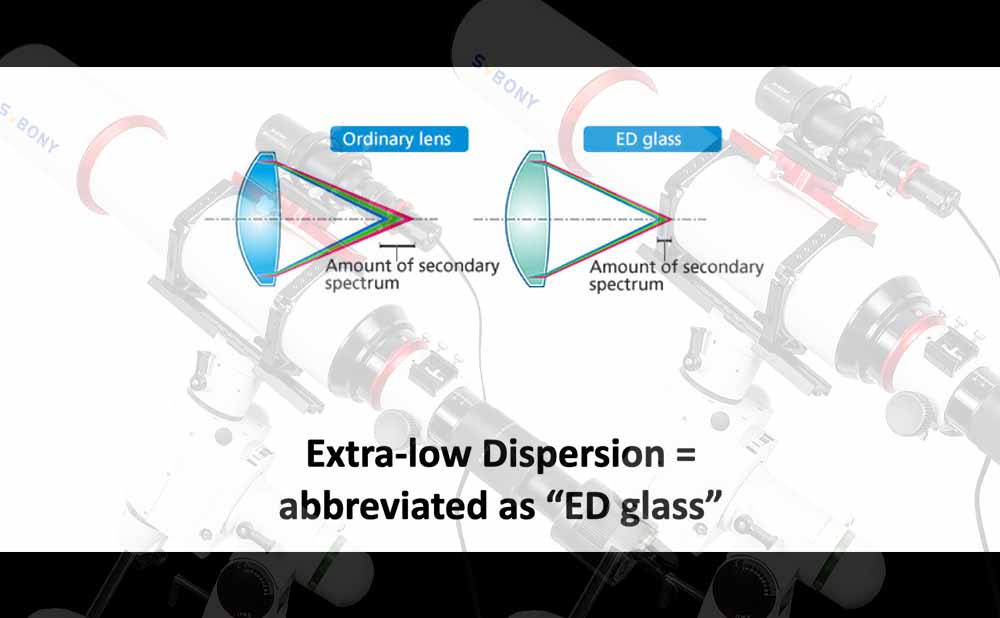Why People Prefer to Choose Telescope with ED Glass

Why People Prefer to Choose Telescope with ED Glass
ED glass is engineered with specific chemical compositions to have a lower refractive index and dispersion characteristics than regular optical glass. It plays a significant role in the production of superior-quality lenses, enabling photographers and other users to capture images with enhanced clarity, sharpness, and true-to-life colors. When buying a telescope, many people prefer to have ED (Extra-low Dispersion) lenses because of several reasons:
Reduced Chromatic Aberration
Chromatic aberration is a common optical issue in telescopes where different wavelengths of light focus at different points, resulting in color fringing or blurring around the edges of observed objects. ED lenses effectively correct chromatic aberration, producing sharper and more accurate images with improved color fidelity.
Improved Image Contrast
By reducing chromatic aberration, ED lenses can enhance image contrast. This means that the boundaries between different objects or features in the observed celestial objects are more defined and distinct, allowing for better visual clarity and detail.
Enhanced Color Accuracy
ED lenses help to achieve more accurate color reproduction. They minimize color fringing and ensure that the colors of stars, planets, and other celestial objects appear true to their actual colors, providing a more realistic and immersive viewing experience.
Higher Resolution
The reduced dispersion of light provided by ED lenses allows for higher resolution when observing fine details on celestial objects. This is particularly beneficial when observing objects such as the Moon, planets, or star clusters, where intricate features or individual stars need to be resolved.
Overall Image Quality
By addressing chromatic aberrations and improving color accuracy, ED lenses contribute to the overall image quality of the telescope. The resulting images are often sharper, clearer, and have improved contrast, providing a more satisfying viewing experience for astronomers and enthusiasts.
It's important to note that while ED lenses can significantly improve optical performance, they are just one of the factors to consider when purchasing a telescope. Other aspects such as aperture size, focal length, and the overall design of the telescope also play crucial roles in determining its performance and suitability for specific astronomical observations.








